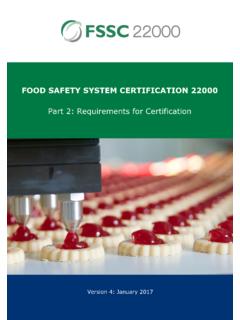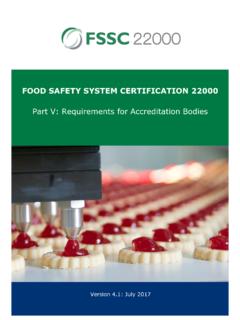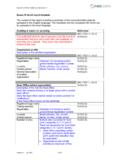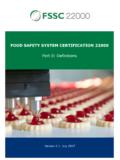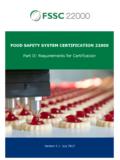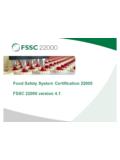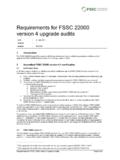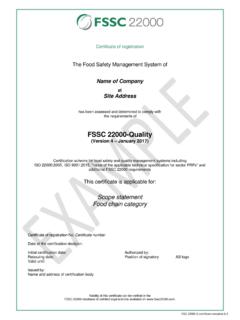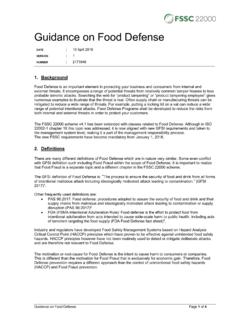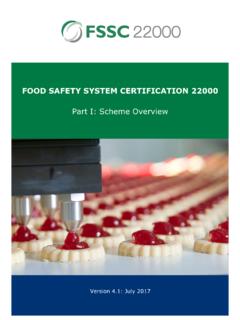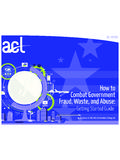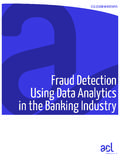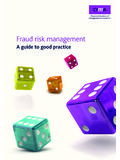Transcription of Guidance on Food Fraud Mitigation - fssc22000.com
1 Guidance on Food Fraud Mitigation Page 1 of 6 Guidance on Food Fraud Mitigation DATE : 10 April 2018 VERSION : 1 NUMBER : 2171848 1. Background The relevance of Food Fraud has grown over the last years, not in the least following a number of food scandals that have led to reduced consumer confidence in the Food Industry. Although the driver of Food Fraud acts (cause) is economic gain, it may nevertheless result in a food safety risk. Such a risk is very often caused by negligence or lack of knowledge by fraudsters. For the consumer food Fraud related risks can be1: a) Direct Food Safety risks: the consumer is put at immediate risk ( addition of melamine to milk powder that results in an acutely toxic exposure; hiding of substances resulting in undeclared allergens).
2 B) Indirect Food Safety risks: consumer is put at risk through long-term exposure ( high levels of heavy metals in food supplements causing harm or lack of benefit over a longer period of time) c) Technical food Fraud risk: there is no direct or indirect food safety risk ( misrepresentation of country-of-origin information). However, this indicates that material traceability may have been compromised and the company no longer able to guarantee the safety of their food products. For Food Manufacturers, the economic impact can be high ( recall, loss of sales, cost of re-building reputation etc.
3 , but also the consumer trust is important, not only for companies but for food industry (sector) as a whole. Following the GFSI benchmarking requirements, FSSC 22000 has introduced a chapter on Food Fraud Mitigation in the latest version of the Scheme ( ). This has become mandatory from January 1, 2018 and includes requirements for a Food Fraud Vulnerability Assessment and a Food Fraud prevention Plan applicable to all products. 2. Definition The definition that FSSC uses is based on the GFSI Position paper issued in 20142: Food Fraud is the collective term encompassing the intentional substitution, addition, tampering or misrepresentation of food/feed, food/feed ingredients or food/feed packaging, labelling, product information or false or misleading statements made about a product for economic gain that could impact consumer health (GFSI BRv7:2017).
4 Food Defense is different from Food Fraud in that the motivation is not economic gain, but an intent to cause harm to consumers or companies from an ideologically or behaviourally motivated background. The harm could be economic, public health or terror. Since there are different motivations Food Defense and Food Fraud Mitigation require a different approach. Food Fraud is as at least as old as ancient Rome and will never be eliminated fully, the actions taken shall be aimed at minimizing the vulnerability for Food Fraud by reducing opportunities for fraudsters.
5 Guidance on Food Fraud Mitigation Page 2 of 6 Figure 1. Intentional vs unintentional adulteration2 3. FSSC 22000 scheme Requirements Part II Requirements for certification Food Fraud prevention Vulnerability assessment 1) The organization shall have a documented and implemented vulnerability assessment procedure in place that: a) identifies potential vulnerabilities, b) develops control measures, and c) prioritizes them against the identified vulnerabilities. 2) To identify the vulnerabilities, the organization shall assess the susceptibility of its products to potential food Fraud acts.
6 Control measures The organization shall put in place appropriate control measures to reduce or eliminate the identified vulnerabilities. Plan 1) All policies, procedures and records are included in a food Fraud prevention plan supported by the organization s Food Safety Management System for all its products. 2) The plan shall comply with applicable legislation. Guidance on Food Fraud Mitigation Page 3 of 6 4. Implementation To help implementing the FSSC 22000 Food Fraud Mitigation requirements, the following way of working is recommended.
7 1) Establish a Food Fraud Mitigation Team 2) Conduct a Food Fraud Vulnerability Assessment (FFVA) 3) Identify and select proportionate Mitigation measures 4) Document the vulnerability assessment, Mitigation measures, verification and incident management procedures in a Food Fraud Mitigation Plan supported by the Food Safety Management System 5) Develop an effective training and communication strategy and implement the Food Fraud Mitigation Plan Note: address all types of Food Fraud as defined by GFSI ( substitution, unapproved enhancements, misbranding, counterfeiting, stolen goods or others); address all products from incoming goods ( raw materials, packaging materials) to outgoing goods ( (semi) finished product).
8 See Appendix 1 for more information. It is important to note that every vulnerability identified will not automatically be determined to be significant and will not automatically be required to be addressed by a Mitigation measure. It is important to identify as many vulnerabilities as possible, so they can be assessed. For example, horsemeat in beef was not originally considered to be a vulnerability that required a Mitigation measure. After severe incidents, the vulnerability assessment may determine this to be significant in such a way that a Mitigation measure is required.
9 Ad 1/2. When conducting an FFVA a number of factors should be taken into account such as: Economic vulnerability (how economically attractive is Fraud ) Historical data (has it happened) Detectability ( how easy to detect, routine screening present) Access to raw materials, packaging materials and finished products in the supply chain Relationship with supplier ( long relationship or spot-buying) Certification through an independent sector specific control system for Fraud and authenticity Complexity of the supply chain ( length, origins and where the product is substantially changed/processed)
10 Many more aspects may be taken into account as deemed appropriate. A number of tools have been developed to assist companies in setting up a FFVA, one of them is SSAFE3, this tool is freely available. The key to assessing the vulnerabilities is: think like a criminal . Supplier certification (forward and backward) by sector specific control systems which are specialized to prevent or mitigate food Fraud can substitute own analytical routine screening. An example is supplier certification via a voluntary certification scheme in the sector of fruit and vegetable juices and purees4.
